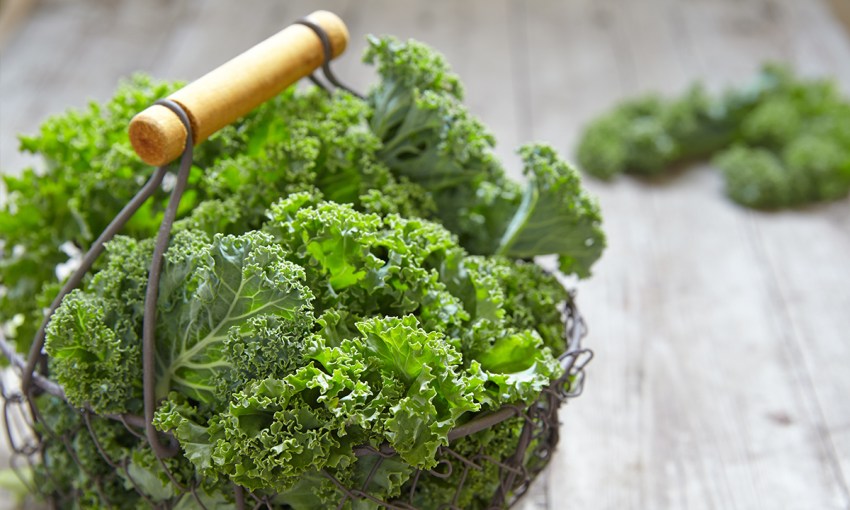Healthy, hardy and easy to grow, kale makes a great addition to the veggie garden, or even the flower bed.
In the garden: Mean greens
Kale, originating in the eastern Mediterranean and Asia Minor regions, has been cultivated for food for thousands of years, with the curly-leafed variety in existence in Greece right back in the fourth century BC. However, kale is a relatively recently introduced vegetable to our shores, and tastes a little like silverbeet.
This vegetable from the Brassica oleracea family is often referred to as “leaf cabbage” and is the perfect crop for novice gardeners because it’s easy to grow, packed with nutrition, can be planted any time from late winter until early autumn and will grow well in containers. Kale, a hardy biennial (or annual) has green or purple leaves but the central leaves don’t form a head like the cabbage or other related members of the brassica family.
Kale prefers well-drained, moist, loamy soil that is not rich in nitrogen but has a pH between 5.5 and 6.8. If your soil is too acidic, add some agricultural lime, plant in a full sunny spot that has had plenty of rotted manure added to it in advance. Seeds can be planted into seed trays or directly into the prepared soil, and they will take about a week to germinate and eight weeks to reach harvesting size.
Keep your plants well-watered, especially when they’re small, and an application of compost throughout the growing period will help to keep the bush producing for a much longer period. You can begin to pick the kale leaves when the plant is about 25cm in height, starting with the outside leaves first. If you want to harvest the entire plant, cut the stem about 5cm above the soil line and you’ll find the base will sprout new leaves in a couple of weeks. Make sure to pick the leaves before they become too tough or turn brown. If you can’t eat the leaves fast enough, pull off the outer leaves and toss them into the compost heap. Kale will last in the refrigerator for up to a week after being picked.
If you don’t have a lot of space to grow Kale in your garden, you can plant the seeds or seedlings into a container that is large enough to give a single kale plant at least 15cm of space, or plant multiple plants about 40cm apart.
Popular varieties to consider growing in your garden or in containers, include Scotch kale, which is a curly leaf variety, Cavolo nero, Lacinato or Tuscan kale. Other types are plain leafed or leaf and spear, which is a curly and plain leafed hybrid variety. “Red Writer” has purple stems and ruffled foliage while “Red Russian” is both heat and cold tolerant and can grow up to a metre in height, but “half tall Scotch kale” is shorter in height and has curly leaves.
No matter what type of kale you decide to plant, you can be sure that it will be packed with nutrition and high in minerals. The advantage in planting kale over spinach, is that it’s lower in oxalate, a substance that in high doses can prevent minerals being absorbed into the body. Kale is also low in calories, contains protein, fibre, antioxidants, sodium, vitamins A, C and K as well as calcium and iron.
Flowering kale, also known as ornamental cabbage, has been bred for its looks rather than culinary use and can’t be eaten. This kale, mainly grown as an annual garden plant, is prized for its serrated or fringed leaf margins and stunning colour tones. It is a fabulous addition to the flower garden and makes an impressive border alternative.
This story first appeared in the winter 2019 issue of SALIFE Gardens & Outdoor Living magazine.



